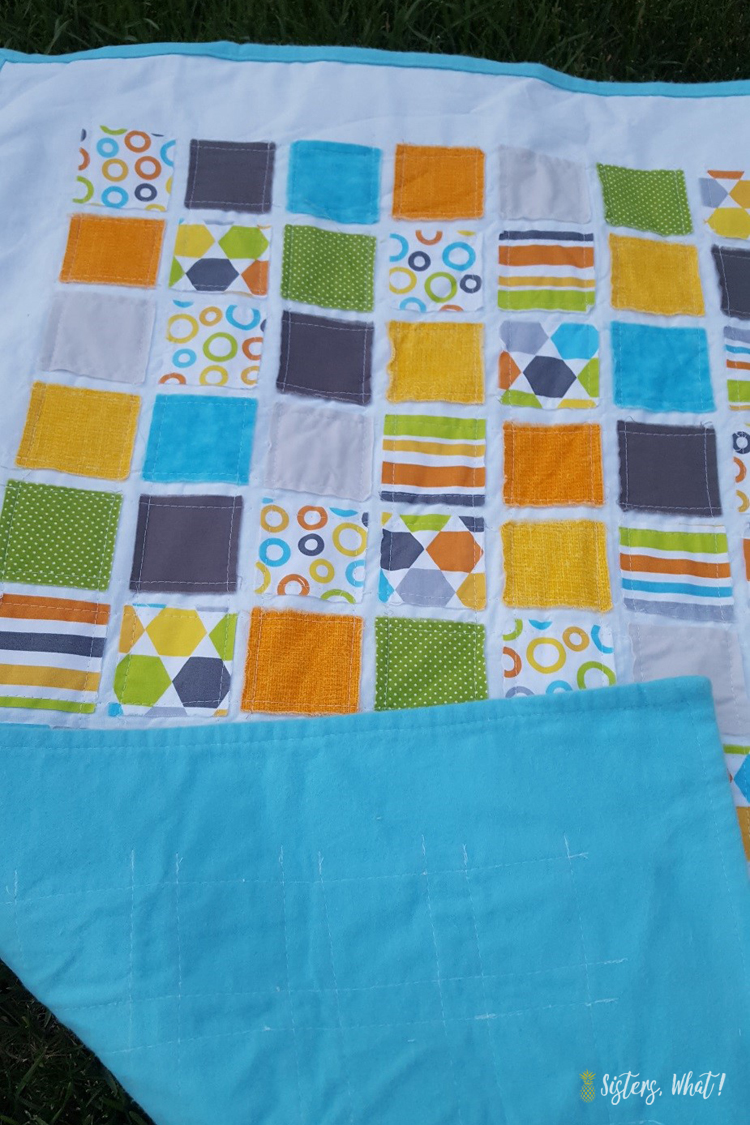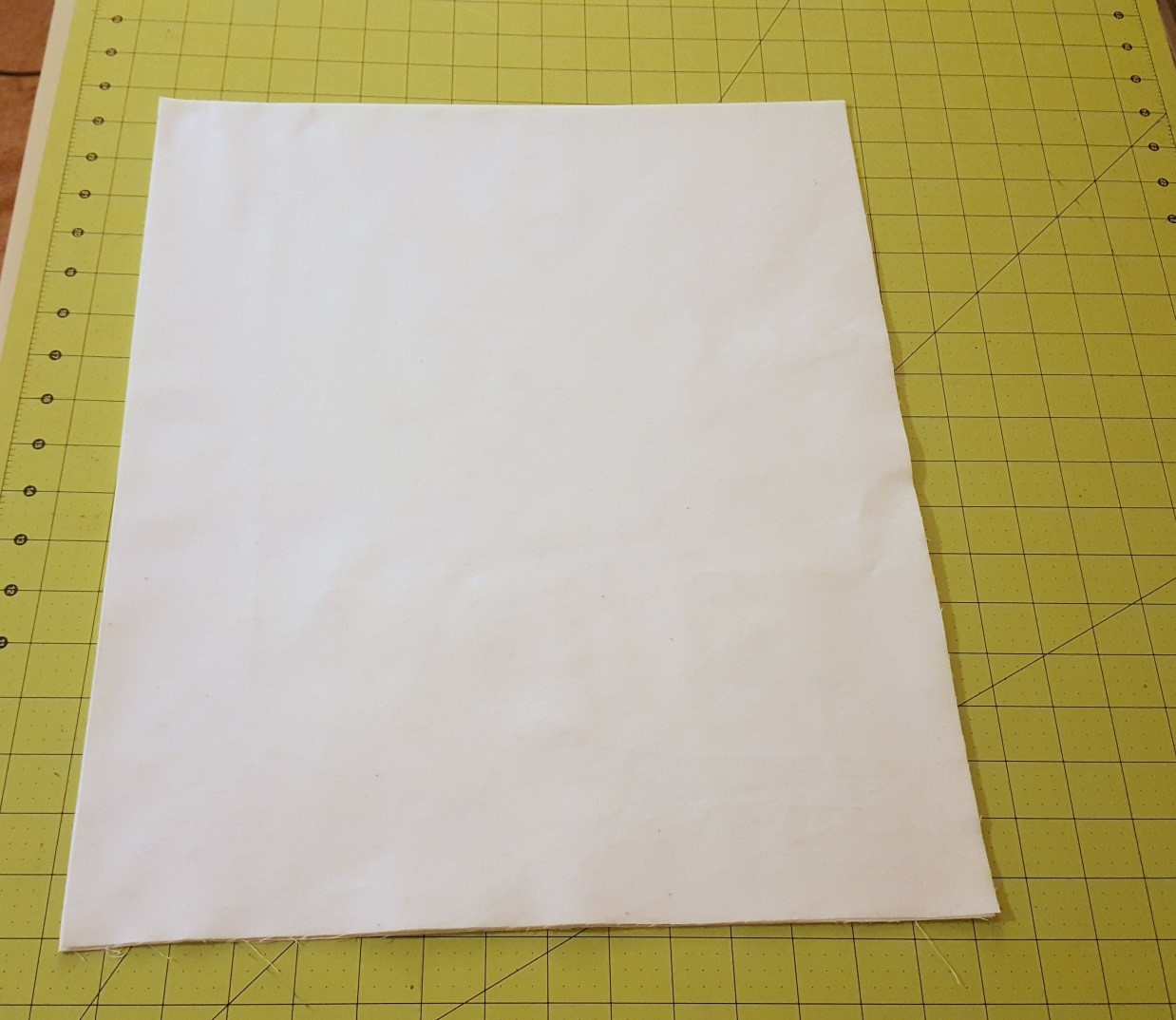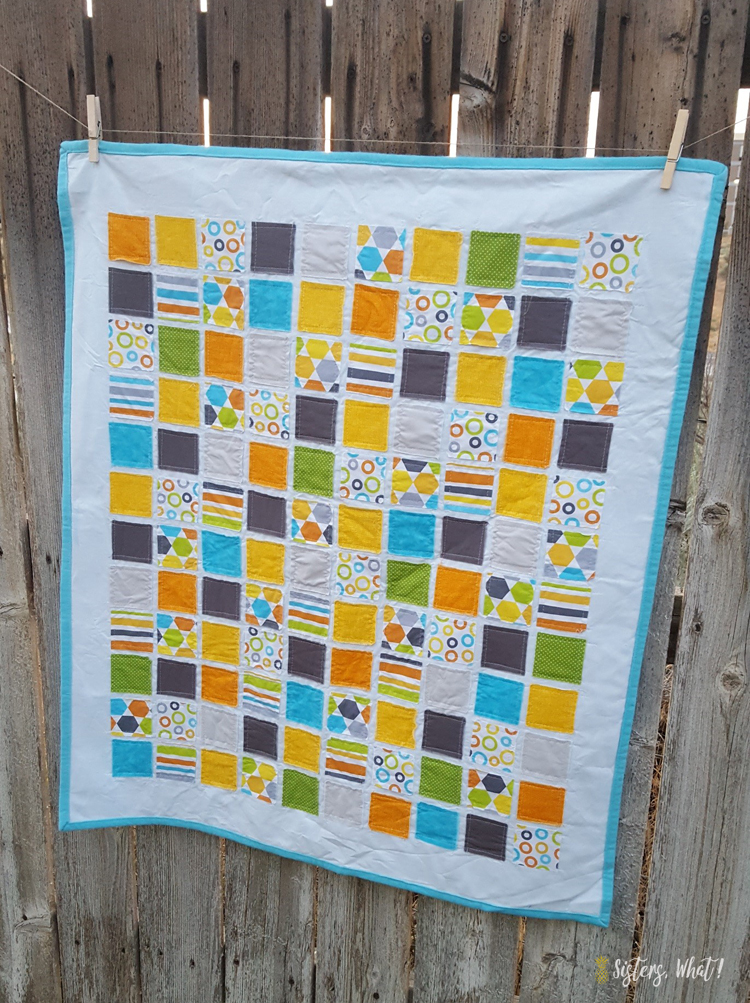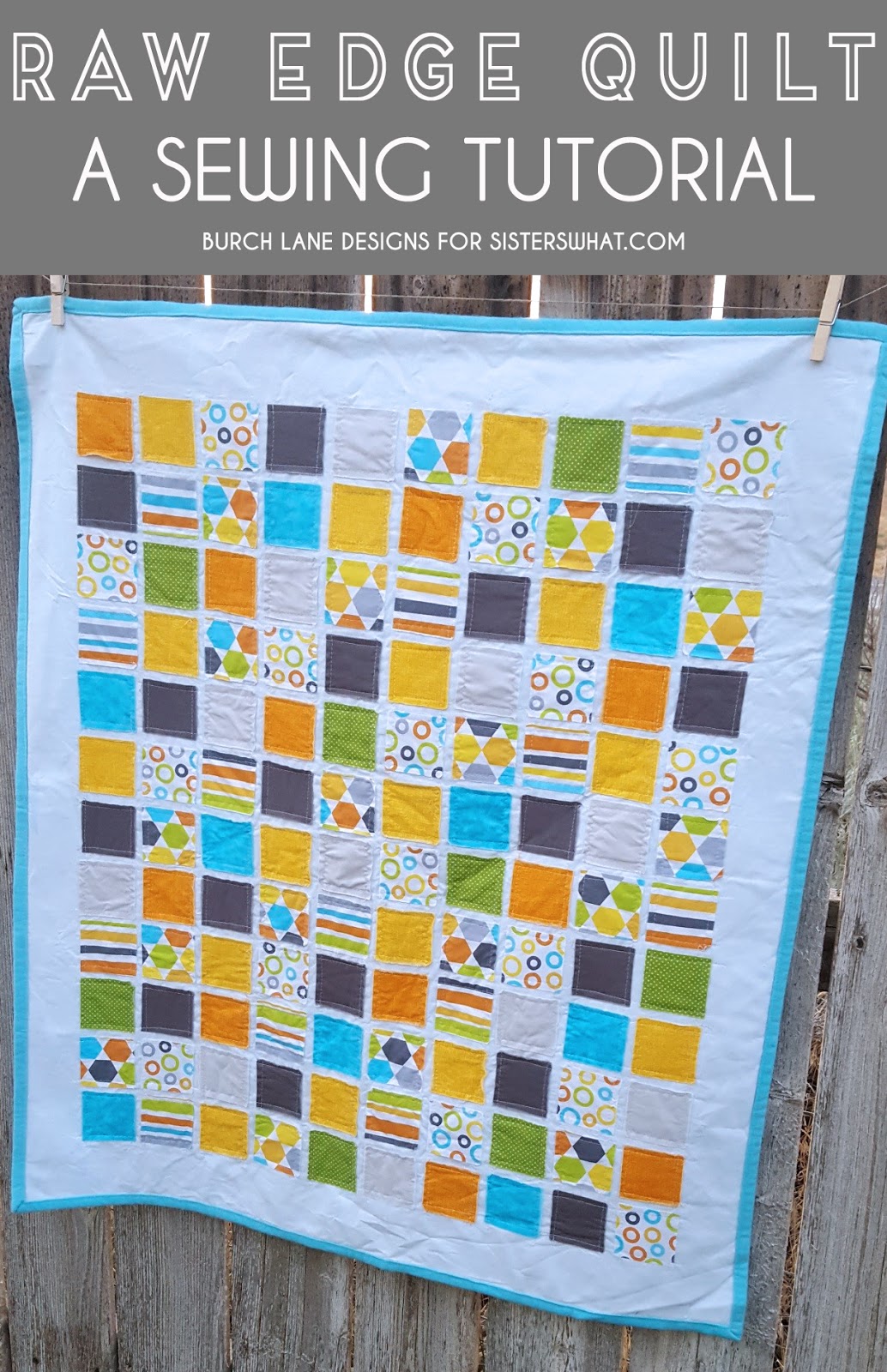This raw edge quilt sewing tutorial is perfect to make for any size quilt. It would make a great baby quilt or even make it a smaller size for a doll.
I'm astounded my the many people in my life that are such amazing quilters. Besides my sisters, sister in laws and mother, my childhood best friend Jamie also makes such beautiful quilts. She is the one who shared this Faux Chenille Baby Blanket Tutorial. One of the most comfy baby blankets!
Jamie recently has even started selling some of here quilts in her Etsy Shop Burch Lane Designs. She is going to share how she makes her raw edge quilts today. But you can also buy them in her shop so make sure you check it out.
How to Make a Raw Edge Baby Quilt Tutorial
Supplies:
-
1 yard fabric for the back
o
Cut to 30
x 35 ½
-
Minimum of 120, 2 ¼ inch squares fabric
o
I can get 36 squares out of 6” of 42” wide
fabric.
o
I like to use 10 – 12 different fabrics, but you
can use as many or as few as you want.
-
Iron and ironing board
2. Step 2:
Now you are going to iron your grid on so you
know where to place the squares. It’s very important to take your time and
measure these correctly, these will help you make your rows nice and straight
and evenly spaced. You are going to be making a grid of 2 ½ inch squares. I
have tried many different ways of making the grid, drawing it on with a fabric
pen or chalk, using a tailor’s marking tool to draw lines and ironing. Ironing
is by far the fastest way to make the grid in my opinion. But if you’d like to
do it another way you are more than welcome to. Begin by folding down the
FOLDED edge of the LONG side 2 ½ inches and ironing. Then from that ironed
fold, fold it another 2 ½ inches. Do this until you have 6 rows.
3 Step 3
After those are all ironed, rotate it the other
direction, remember to fold down from the FOLD. You will iron 5 rows this
direction.
4 Step 4:
STep 5:
Make sure all the creases are ironed out of your
back fabric. Lay it out RIGHT side DOWN. Lay your white top fabric on it RIGHT
side UP. (So the fabrics are WRONG sides TOGETHER). Just be sure you have a
couple inches of the back fabric around all the sides of the top fabric.
6Step 6:
Use your basting spray to hold the two pieces
together. I smooth the fabrics out then fold back half of the top layer and
spray then smooth it out again, then do the other half.
AStep 7:
Now you are going to lay your squares out. Do
this however you please, random or pattern. I cut all my squares then count how
many I have of each so that I know how many quilts I can make with them. Then I
determine how many I can use on one quilt. For example, I have 12 total green
squares, so I can use 6 on this quilt so I have enough for another quilt. Then
I start with one fabric at a time and lay them out so they are spaced nicely.
Then I add the next color and so on until all my squares are placed where I
want them.
88
NStep 8
ow that you’ve placed the squares where you
want them, you are going to glue them down so they don’t move. You don’t need a
ton of glue, just enough to hold them in place while you sew it. And don’t
worry, the glue will wash away when you wash the quilt.
9Step 9:
Once you’ve glued all the squares down you are
going to sew them. I sew with a ¼” seam
allowance, so I put the needle in the far right position and use the edge of my
foot as a guide. Start about ¼” above the first square and make sure to
backstitch, then just sew straight down until about ¼” past the last square in
the row and backstitch again. I start from one side and sew all the right edges
of the squares down, and then I flip the quilt around so that the edges I just
sewed are on now on the left and I sew the right side down again. I continue
this until all 4 sides of the quilt are done.
Step 10
Now that all the rows are sewn you need to clip
your threads on the top and the bottom of the quilt.
Step 11:
Trim the sides of the quilt so that the back
fabric is 1” wider than the front fabric on all four sides. You are going to
use this to make fold over binding.
Step 12
.
Okay, now for the binding. You can probably find
a better tutorial on how to do fold over binding, but I like it when I can use
one tutorial for the whole project, so I’m going to try and explain this the
best I can.
Step 13: How to Bind a Quilt
1. Do one side of the quilt at a time. Fold the back fabric in half, so the raw edge of the back fabric is against the raw edge of the top of the quilt. (Or, since you cut it 1” bigger than the top, you are folding it ½”).2. Fold the back fabric ½” again. So the back fabric now comes over the top fabric ½”.
3. Turn the quilt counter-clockwise and do the same thing to that edge, but like how the picture shows, when you get to the corner where the sides meet that you already folded, open it up.
4. Now, open the second side you ironed and close the first side you ironed.
5. Fold the corner down so that it is against the raw edge of the top fabric.
6. Fold the raw edge of the back fabric to meet the raw edge of the top fabric.
7. Fold it again. Now all your raw edges are hidden and you have a nice mitered corner.
8. Pin or clip it in place.
9. Once you’ve done this all the way around you are ready to sew it. I like to use my blind-hem foot because it has a little guide on it, but this is by no means necessary. I’m not sure the seam allowance I use for the binding, just make sure you are in far enough to catch the binding.
You did it! Almost done.
11 Throw your quilt in the wash, then dry it. When
you pull it out of the dryer, it’s going to look like it fell apart in the
wash. Don’t worry, it’s supposed to look like that. Washing the quilt is what
gives it the frayed look. Just lay it out and pick all the loose strings off. Also
know, it won’t fray this much every time. The first wash is always the worst.
This post may contain affiliate links. Thanks for supporting Sisters, What!
and you're done!!
Make sure you stop by Jamie's shop to check out here beautiful blankets.
You may also enjoy Jamie's other tutorials:




































No comments
We LOVE hearing what you think. Thank you for your sweet comments!